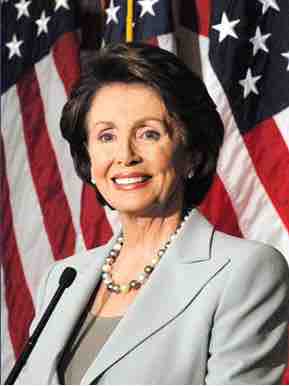Political Parties
Political parties are one of the most enduring political institutions in the US, and with recent increases in the partisan nature of congress political parties are playing a increased role in US democracy.
Political parties are one of the main coordinating bodies in Congress. With hundreds of individual members the party's caucus or conference helps to bring together like-minded politicians and constituents, coordinate election efforts, set legislative priorities, and determine who will receive important committee appointments.
History of Political Parties
The Democrat and Republican parties have dominated the political landscape in the US for quite some time now. However, this has not always been the case, and the current political parties have also changed significantly over this time.
There is little mention of political parties in the US constitution, or any other founding documents. Many of the country's founder opposed political parties, expecting them to be divisive. However, by the 1790s two parties the Federalists and Republicans had been established. These parties were separated by preferences for either a strong or weak central government.
Each of today's major parties have made various changes throughout their existence, even as their name may have remained the same. For example it was a Republican-led congress that initiated the Civil War amendments that officially outlawed slavery in the US and gave citizenship and voting rights to formerly enslaved people and their ancestors. However, by the 1960s in was Democratic politicians who moved forward Civil Rights legislation. Today we are seeing another shift in the Republican Party with the increased influence of the Tea Party social movement within the leadership of the party.
Political Parties in Congress
In Congress political parties serve to coordinate, assistant and provide resources for members of congress and political candidates. Parties control primary elections which are the main means through which candidates can get on ballots. They also control committee appointments, and since the 1990s there has been a stronger control by congressional party leaders on individual members including higher rates of party voting. Members of congress now routinely vote with their party at rates as high as 60 or 70 percent. In addition to increasing the power of party leadership it means that bipartisan collaboration between members of congress is less likely.

Nancy Pelosi
Nancy Pelosi is the leader of the House Democrats and the first women to be Speaker of the House.
This rise in party power also means that the experiences of members of the majority versus minority party will be quite different. Majority party members will have many positive powers to pass legislation to support their own ideology and constituencies. However, minority party members will have to rely on negative powers such as blocking legislation in committees, or using filibuster techniques.
Coalitions
To deal with a situation in which no clear majorities appear through general elections, parties either form coalition cabinets, supported by a parliamentary majority, or minority cabinets which may consist of one or more parties. Cabinets based on a coalition with majority in a parliament, ideally, are more stable and long-lived than minority cabinets. While the former are prone to internal struggles, they have less reason to fear votes of non-confidence. Majority governments based on a single party are typically even more stable, as long as their majority can be maintained.
Coalition cabinets are common in countries in which a parliament is proportionally representative, with several organized political parties represented. It usually does not appear in countries in which the cabinet is chosen by the executive rather than by a lower house, such as in the United States (however, coalition cabinets are common in Brazil). In semi-presidential systems such as France, where the president formally appoints a prime minister but the government itself must still maintain the confidence of parliament, coalition governments occur quite regularly. In the United States, political parties are best described as coalitions.